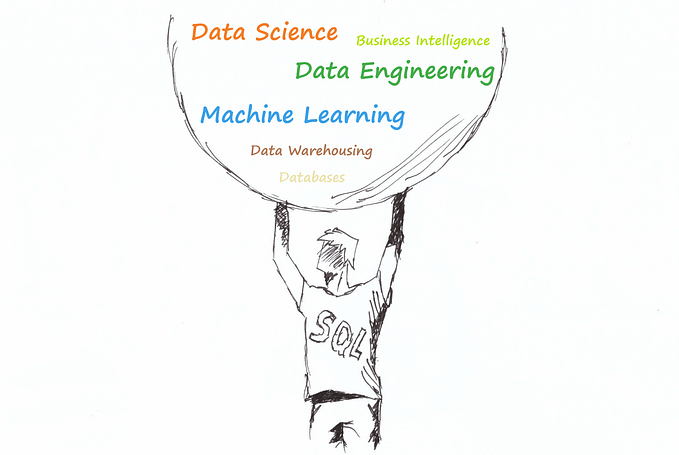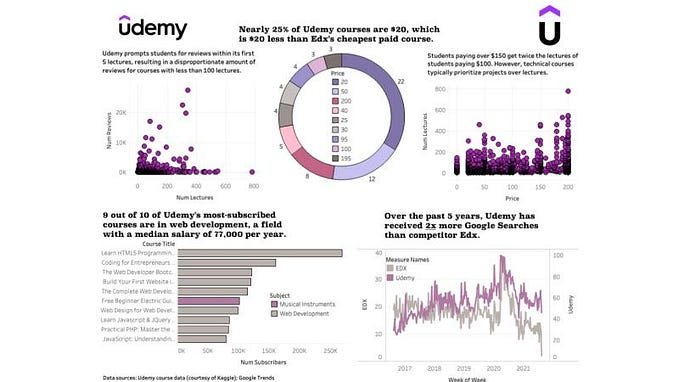Big Data Analytics: Handling and Analyzing Large Datasets

Big Data Analytics: Handling and Analyzing Large Datasets
In today’s digital age, the amount of data generated by individuals, businesses, and organizations has skyrocketed. This deluge of data, known as big data, presents immense opportunities for gaining valuable insights and making data-driven decisions. However, the sheer volume, velocity, variety, and veracity of big data pose significant challenges for traditional data processing and analysis methods. This article explores the world of big data analytics, focusing on the strategies and techniques used to handle and analyze large datasets.
1. Introduction to Big Data Analytics
Big data analytics refers to the process of extracting actionable insights and meaningful patterns from massive and complex datasets. It involves the use of advanced tools, technologies, and algorithms to process, store, and analyze data efficiently. By harnessing the power of big data analytics, organizations can uncover hidden patterns, trends, and correlations that can drive business growth, improve operational efficiency, and enhance decision-making.
2. The Significance of Handling and Analyzing Large Datasets
Handling and analyzing large datasets is crucial for several reasons.
Firstly, big data contains valuable information that can provide organizations with a competitive advantage. By extracting insights from large datasets, businesses can identify customer preferences, market trends, and potential opportunities.
Secondly, large datasets often contain real-time or near-real-time data streams, requiring organizations to process and analyze data promptly. The ability to capture and analyze data in real time enables businesses to make immediate decisions and respond swiftly to changing market conditions.
Thirdly, large datasets come in various formats and structures, including structured, semi-structured, and unstructured data. Analyzing diverse data types allows organizations to gain a comprehensive understanding of their operations, customers, and markets.
Lastly, the veracity of data is a significant concern in big data analytics. Large datasets often contain noise, errors, and inconsistencies. Analyzing and cleaning the data helps organizations ensure the accuracy and reliability of their insights.
3. Challenges in Processing Big Data
Processing big data poses several challenges due to the characteristics of large datasets. Let’s explore the key challenges:
a. Volume of Data
Big data refers to datasets that exceed the capabilities of traditional data processing systems. Dealing with massive volumes of data requires scalable and distributed computing architectures capable of handling the data load.
b. Velocity of Data
In many applications, data is generated and collected at an unprecedented speed. Real-time data processing and analysis are crucial for organizations to derive immediate insights and take timely actions.
c. Variety of Data
Big data encompasses diverse data types, including structured, semi-structured, and unstructured data. Analyzing and integrating data from various sources and formats is essential for obtaining a comprehensive view of the data.
d. Veracity of Data
The veracity of data refers to its accuracy, reliability, and trustworthiness. Large datasets often contain noise, errors, and inconsistencies that can impact the quality of the insights derived from them. Ensuring data quality is a vital aspect of big data analytics.
4. Tools and Technologies for Big Data Analytics
To handle and analyze large datasets effectively, several tools and technologies have emerged in the field of big data analytics. Let’s explore some of the key ones:
a. Hadoop
Hadoop is an open-source framework that provides distributed storage and processing capabilities for big data. It consists of the Hadoop Distributed File System (HDFS) for data storage and the MapReduce programming model for parallel processing.
b. Apache Spark
Apache Spark is a fast and general-purpose distributed computing system designed for big data processing and analytics. It offers in-memory data processing, making it significantly faster than traditional disk-based processing systems.
c. NoSQL Databases
NoSQL databases, such as MongoDB and Cassandra, are designed to handle large volumes of structured, semi-structured, and unstructured data. They provide scalability and flexibility for storing and querying diverse data types.
d. Machine Learning Algorithms
Machine learning algorithms play a crucial role in big data analytics, enabling organizations to uncover patterns, make predictions, and automate decision-making processes. Algorithms like decision trees, random forests, and neural networks are commonly used for analyzing large datasets.
5. Data Collection and Preparation
Before analysis, data needs to be collected and prepared for processing. The following steps are involved in data collection and preparation:
a. Data Extraction
Data extraction involves retrieving data from various sources, such as databases, APIs, web scraping, or sensor devices. It is essential to gather relevant and high-quality data for accurate analysis.
b. Data Cleaning
Data cleaning aims to remove inconsistencies, errors, and outliers from the dataset. It involves tasks like handling missing values, resolving duplicates, and standardizing data formats.
c. Data Transformation
Data transformation involves converting data into a suitable format for analysis. It may include tasks like data normalization, aggregation, or feature engineering.
d. Data Integration
Data integration combines data from multiple sources into a unified dataset. It ensures that data is consistent and can be analyzed as a whole.
6. Data Storage and Management
Efficient data storage and management are crucial for big data analytics. Several approaches are commonly used for storing and managing large datasets:
a. Distributed File Systems
Distributed file systems, such as HDFS, allow organizations to store and manage data across multiple machines in a distributed environment. It enables high scalability and fault tolerance.
b. Data Warehousing
Data warehousing involves storing large amounts of data from various sources in a structured and organized manner. It facilitates efficient querying and analysis of data.
c. Data Lake
A data lake is a centralized repository that stores large volumes of structured, semi-structured, and unstructured data in its raw format. It provides flexibility for data exploration and analysis.
7. Data Processing and Analysis
Processing and analyzing large datasets require specialized techniques and approaches. Let’s explore some of the key methods used in big data analytics:
a. Batch Processing
Batch processing involves processing data in large volumes at regular intervals. It is suitable for applications that do not require real-time analysis and can tolerate some delay.
b. Stream Processing
Stream processing enables real-time analysis of data streams as they are generated. It is used for applications that require immediate insights and fast response times.
c. In-Memory Analytics
In-memory analytics leverages the power of RAM to store and process data in real time. It provides faster data access and analysis compared to disk-based systems.
8. Data Visualization and Reporting
Data visualization and reporting play a crucial role in communicating insights derived from large datasets. Effective visualization techniques help stakeholders understand complex patterns and trends. Some key aspects of data visualization and reporting include:
a. Visualizing Large Datasets
Visualizing large datasets requires techniques that can handle the volume and complexity of the data. Tools like Tableau, Power BI, and D3.js offer powerful visualization capabilities for big data.
b. Interactive Dashboards
Interactive dashboards allow users to explore and interact with data visually. They provide an intuitive interface for data exploration and enable users to drill down into specific details.
c. Reporting Tools
Reporting tools, such as Crystal Reports and Jaspersoft, enable the creation of informative and visually appealing reports. They help summarize and present insights derived from big data analytics.
9. Data Security and Privacy
As the volume and sensitivity of data increase, ensuring data security and privacy becomes paramount. Organizations need to implement robust measures to protect data from unauthorized access and breaches. Key considerations for data security and privacy in big data analytics include:
a. Data Encryption
Data encryption transforms data into an unreadable format, ensuring that only authorized parties can access and decipher it. Encryption techniques like AES (Advanced Encryption Standard) are commonly used for securing data.
b. Access Control
Access control mechanisms regulate who can access and manipulate data. Role-based access control (RBAC) and attribute-based access control (ABAC) are commonly used approaches for managing data access in big data environments.
c. Anonymization Techniques
Anonymization techniques help protect privacy by removing or obfuscating personally identifiable information (PII) from the dataset. Methods like data masking, tokenization, and generalization are used to de-identify sensitive data.
10. Real-World Applications of Big Data Analytics
Big data analytics finds applications in various industries and domains. Let’s explore some real-world examples:
a. E-commerce and Retail
In e-commerce and retail, big data analytics is used to personalize customer experiences, optimize pricing strategies, detect fraud, and improve inventory management.
b. Healthcare
Big data analytics has the potential to revolutionize healthcare by enabling personalized medicine, improving disease diagnosis and treatment, and enhancing public health surveillance.
c. Finance and Banking
In the finance and banking sector, big data analytics helps in fraud detection, risk management, customer segmentation, and algorithmic trading.
d. Transportation
Big data analytics is used in transportation to optimize routes, manage traffic congestion, enhance logistics, and improve predictive maintenance for vehicles.
e. Social Media Analysis
Social media platforms leverage big data analytics to analyze user behaviour, sentiment analysis, targeted advertising, and content personalization.
11. Future Trends in Big Data Analytics
The field of big data analytics is constantly evolving. Several future trends are expected to shape the landscape of big data analytics:
a. Edge Computing
Edge computing brings data processing and analysis closer to the source of data generation, reducing latency and enabling real-time insights in decentralized environments.
b. Artificial Intelligence
Artificial intelligence (AI) techniques, such as machine learning and deep learning, will continue to play a vital role in extracting insights and automating decision-making processes.
c. Blockchain Integration
Blockchain technology can enhance data security, privacy, and integrity in big data analytics by providing an immutable and decentralized ledger for data transactions.
d. Internet of Things (IoT)
The proliferation of IoT devices will generate vast amounts of data, requiring advanced analytics techniques to extract meaningful insights and enable smart decision-making.
12. Conclusion
Big data analytics has revolutionized the way organizations handle and analyze large datasets. By leveraging advanced tools, technologies, and methodologies, businesses can unlock valuable insights, gain a competitive edge, and make data-driven decisions. However, the challenges associated with big data, including volume, velocity, variety, and veracity, require organizations to adopt scalable infrastructure, robust data management practices, and efficient analysis techniques. As the field continues to evolve, future trends like edge computing, AI, blockchain integration, and IoT will shape the future of big data analytics.
Let’s embark on this exciting journey together and unlock the power of data!
If you found this article interesting, your support by following steps will help me spread the knowledge to others:
👏 Give the article 50 claps
💻 Follow me on Twitter
📚 Read more articles on Medium| Blogger| Linkedin|
🔗 Connect on social media |Github| Linkedin| Kaggle| Blogger









